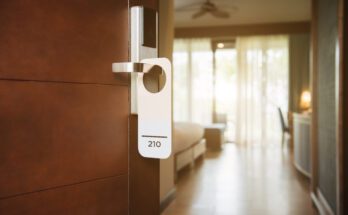On Tuesday, I wrote about the National League’s current state of limbo regarding the continued use of the designated hitter. The Senior Circuit’s adoption of the DH was one of several rules changes included as part of MLB’s 2020-specific health and safety protocols, though both the league’s operations manual and commissioner Rob Manfred made clear that all of those changes would be undone once the season ended unless the players’ union agreed otherwise. While rules-related proposals are usually in place in time to be voted upon at the annual November owners meetings, this year’s assembly was canceled due to the coronavirus pandemic, and with MLB hoping the players will agree to some kind of expanded playoff format in exchange, it could be awhile before we get a resolution.
In writing Tuesday’s piece, I thought it would be interesting to take a page from the Jeff Sullivan playbook and invite FanGraphs’ readership to weigh in regarding not only the universal DH, but also the other rules that were adopted for 2020 but could revert back to their previous state. Several of these rules, or variations of them, had been kicked around in proposals for years, but few of us dreamed they would be put into action given their relatively radical nature. The shortened season created conditions that allowed some of them to audition on the big stage, and while many purists were mortified, a significant share of players, fans, and media found that even some of the more radical ones weren’t so bad after all.
Figuring that a couple of rules — namely the allowances for suspended games of less than five innings to be continued and for pitchers to carry wet rags in their back pockets — weren’t interesting enough to capture the imagination, I pared my list for readers to consider down to six. Additionally, I decided not to take the readers’ temperature on other controversial matters such as the potential introduction of pitch clocks and the outlawing of the infield shift. For the purposes of answering the questions, you should assume that I am talking about a relatively unencumbered season rather than another one played under pandemic conditions, with an emphasis on getting players in and out of ballparks more quickly. With COVID-19 rates surging all over the country, that may be fantasy, but if we’re talking about things going back to their previous state in 2022 rather than ’21, so be it. The question about each rule is accompanied by both a brief introduction as well as a follow-up question as to how much you actually care about that particular matter. I’ll compile the results in a follow-up post in the near future.
1. The universal designated hitter
As noted, I just wrote about this one. Back in June, I laid out my reasoning for preferring that the NL adopt the DH; while yes, that meant losing the chance for another moment of collective joy on the scale of Bartolo Colon hitting a home run, it also meant shedding a whole lot of tedious plate appearances, misguided attempts to sacrifice bunt, and dull-as-dishwater sequences of No. 8 hitters being pitched around to get to the pitcher. With the DH in place in the NL, the Senior Circuit outscored the Junior Circuit for the first time since 1974, and NL DHs performed about as well as AL ones despite teams not having a full offseason to figure out how to staff the position.
2. The extra-innings rule
Taken from the minor leagues, this rule calls for each half-inning after the ninth to begin with a runner on second base, creating an immediate level of urgency and increasing the chances that extra-innings games end more quickly. In that regard, the rule did what it was supposed to do; extra-inning games averaged 10.29 innings in 2020, down from 11.14 in ’19 and 11.04 in ’18. The percentage of games going past 11 innings dipped to 0.7%, down from 2.3% in 2019 and 2.8% in ’18. Only two games lasted into the 13th inning, compared to 37 in 2019.
3. Seven-inning games in doubleheaders
Another one taken from the minor league playbook, and not put in place until August 1, this was necessitated by the number of makeup games created by COVID-19-related postponements, so as not to burn out pitching staffs. A total of 110 shortened doubleheader games were played – 55 doubleheaders, about one per day from the time the rule was introduced through the end of the season, with the Cardinals (22) leading the way; due to an outbreak that shut them down starting on July 30, they didn’t play a single game for 16 days, then played an MLB-high 11 doubleheaders from August 15 onward, and a total of 53 games in 44 days; they would have played another doubleheader on the day after the regular season ended had a playoff spot been on the line. Given that strange mix of games, their pitchers ended up throwing just 473 innings, 24 fewer than the NL’s 14th-ranked team (the Phillies) and 65.2 fewer than the first-ranked Dodgers; their total was just 87.5% of the theoretical baseline of 540 innings (60 x 9).
Six other teams reached double digits in seven-inning doubleheader games, namely the Phillies (16), Marlins and Yankees (14 apiece), Nationals and Cubs (12 apiece), and Athletics (10). The only team that did not play any such games was the Indians, while three other teams (the Dodgers, Rockies, and White Sox) played just two apiece.
4. A lifting of the restrictions on position players pitching
In 2019, position players took the mound a record 85 times, 20 more than the year before, and nearly as many as 2015-17 combined (87). In mid-February, MLB and the union finalized the expansion of rosters from 25 to 26 players while capping the number of pitchers (13), creating a designation of two-way players so narrow that it applied only to Shohei Ohtani and limited the use of position players for pitching to extra innings or in any game where the score margin was more than six runs.
As part of the return-to-play agreement, however, all of those rules were swept to the side, with rosters increasing to 30 players for the first two weeks of the season (and then 28 thereafter) and the position player pitching restrictions lifted. Even with those expanded rosters, there were 35 instances of position players pitching (not including Ohtani, who totaled 1.2 innings before suffering a flexor pronator strain that ended his pitching efforts for the season). Those 35 appearances represented a larger share of the total relief appearances than in 2019 (0.57% versus 0.51%). Thanks in part to the extra-innings rule change, none of those appearances were in extras, though a few did occur when the margin was just six runs, and in one instance, during the nightcap of a September 4 doubleheader between the Braves and Nationals, Charlie Culberson extricated Atlanta from a bases-loaded jam when the margin was just three runs.
5. The three-batter minimum rule
Adopted with that same slate of roster rules in February, this one requires all starters and relievers to face at least three batters, barring injury. The move was supposed to reduce the number of pitching changes and thus in-game delays, that despite the fact that outings of two batters or fewer were already on the wane. Thanks to those expanded rosters and larger bullpens — not to mention the short ramp-up from the reopening of camps to Opening Day, which prevented many starters from being fully stretched out — the number of relievers used per team game increased from 3.41 to 3.43, and the average time for nine-inning games grew from 3:05 to 3:07, a record.
In late August, Craig Edwards found that the rule’s main effect was a decline in the usage of left-handed pitchers late in games — what you’d expect, given that LOOGYs were often at the center of those brief pitching appearances — though without a performance decline. I’m not sure where the numbers ended up once rosters were expanded in September.
6. The expanded playoff format
Probably the most controversial of all of the rules changes — even moreso than the NL DH — was the expansion of each league’s playoff slate from five teams to eight, and the creation of a best-of-three Wild Card Series round that threatened to derail even the top-seeded teams. Though MLB had mused about a future expansion of the playoff field prior to the pandemic, the agreement to create this extra round and new format didn’t go into effect until Opening Day. The expansion generated more broadcast rights money for teams in a year where gate revenue was nonexistent, with at least $50 million earmarked for the players.
Each division’s winners were seeded 1-3 by record, each division’s second-place teams were seeded 4-6 in the same manner, and then the two teams with the best records beyond that were seeded 7-8, even if they had better records than seeds 4-6 (as was the case with the 35-25 White Sox and 32-28 Blue Jays vis-a-vis the 29-31 Astros). Beyond the Wild Card Series round, all games took place at neutral sites; without the need to actually travel between cities, “travel days” were eliminated until the World Series, which placed a greater emphasis on pitching depth. While the Astros came within one win of a trip to the World Series, the two top seeds squared off in the Fall Classic, the first time that happened since 2013.
Take Our PollThank you for participating! I’m sure our comments will be ripe with suggestions for tweaks to the rules not covered within the framework I’ve provided. I may get into those tangents when I report and evaluate the results of these polls in the near future.
Read More


